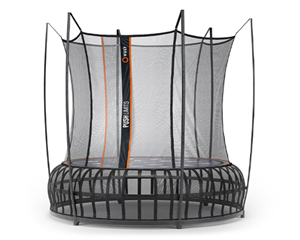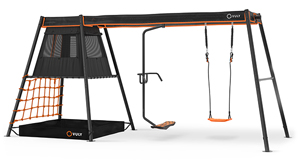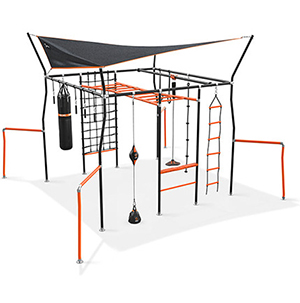Trampolines are rapidly becoming a backyard staple, and it's hard to imagine a time when these fun, versatile tools did not have an honoured place in family life.
Trampolines were actually first developed not for recreational use, but as training tools. Although the modern trampoline has only been around for a short period of time, various rebounding devices have been used for centuries.
Check out Australia's best modern trampolines
Trampoline History
Trampolines and people have enjoyed a long, beneficial history together. Surprisingly, the first evidence of trampoline use has been traced back thousands of years. Ancient depictions of trampoline-like devices have been discovered in China, Egypt, and Iran, although very little is known about their uses at that time.
Archaeological experts hypothesise that trampoline-like devices might have been used for celebrations, religious ceremonies, or to simply get a better look at the available wild game in the ancient people's surroundings. Although their exact purpose is unclear, the painstaking drawings of these activities suggest that trampolines played a central role in the lives of people in ancient times.
Later, trampolines found their way to the bitter landscape in Alaska. Rebounding devices were used by the Inuit people and were used as a sports activity in addition to a survival tool. They were composed of walrus skins and were used to toss people up in the air. To achieve this, one person would sit on the skin while several other people tightly held the edges. With a sweeping motion, the surrounding people would launch the seated person into the air. This early form of trampolining was used both recreationally and as a method of spotting animals from a safe distance.
The exact origin of later trampolines is a bit of a mystery. Although there is no documented evidence to support the claim, the standard belief is that the early trampoline predecessor was first developed by a French artist named Du Trampolin and was subsequently named in his honour. Du Trampolin was thought to have been watching a circus and realised the possibility of using the trapeze safety net as a form of propulsion and landing device—much like a jumping mat. Impassioned, he spent his days developing and experimenting with different methods of suspension and materials. The result was a medium-sized net that was suitable for use by one acrobat, greatly decreasing the possibility of mid-air collisions.
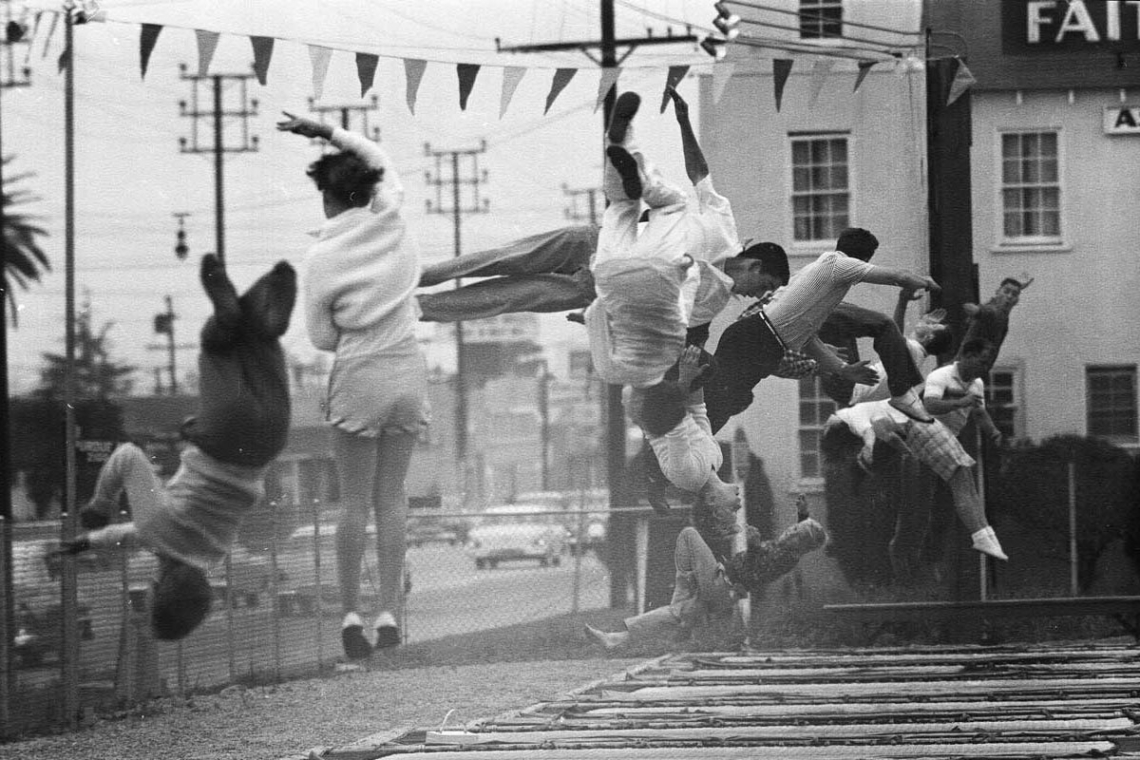
Trampolines As We Know Them
Although these earlier devices were used for hundreds of years, modern trampolines were not invented until the 20th century. George Nissen and Larry Griswold are credited with developing the first trampoline in 1935. Larry Griswold was a legendary gymnast in his youth and went on to become the gymnastics coach at the University of Iowa. It was at this university that he first met Nissen, an extraordinary tumbler on the gymnastics team.
The two men had noted circus trapeze artists using their safety nets to rebound and perform additional stunts and decided that this would be a fantastic training tool for the team. The two athletes soon became inventors as they developed the first modern trampoline. The device was composed of angle iron, a canvas bed, and rubber springs and was made in the basement of the local YMCA. Aided by some of the finest trapeze artists in the world, Nissen and Griswold spend countless hours threading the long cords of the nets using only large javelin-head needs - a painstaking task.
Although the devices were originally developed to aid in the gymnastics training program, Nissen and Griswold soon discovered that trampolines were a crowd pleaser in their own right. They stumbled upon this discovery soon after the product was finished. At the time, Nissen was still improving his tumbling, so he and his fellow inventor decided to relocate their new invention to the YMCA camp where it was developed. It soon caught the attention of curious children, who begged to play on it. It was then that the two men realized that the trampoline had much more potential than they had originally dreamed. Inspired, they introduced it to a wider audience and the Griswold-Nissen Trampoline and Tumbling Company were born. Their invention continued to have a lasting effect throughout the 20th century and beyond.
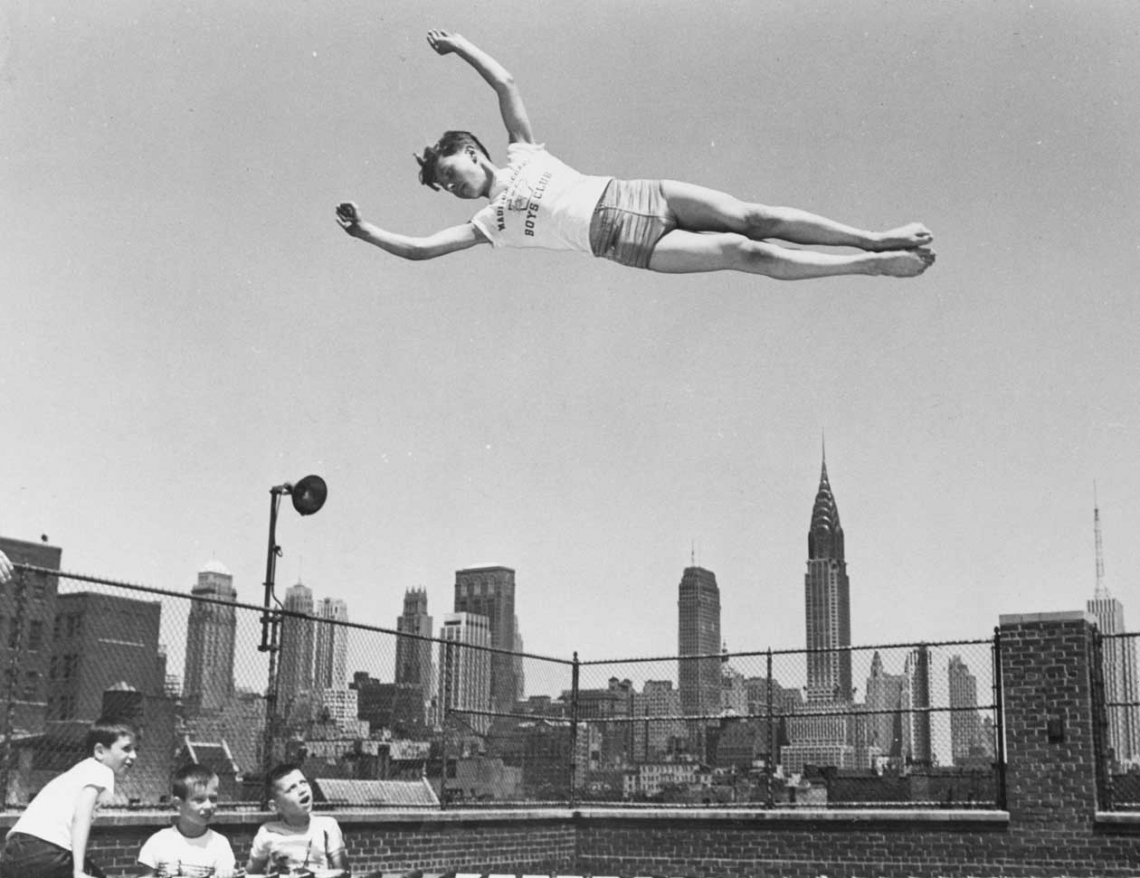
The First Trampoline
On April 7, 2010, the world lost George Nissen, the inventor of the first modern trampoline. Nissen was a beloved member of the gymnastics community and was best known for his great passion for trampoline sports.
Nissen invented the trampoline after he observed trapeze artists use their safety nets as a tool to rebound and perform additional gymnastic feats. In a brilliant revelation, he realised that this would be a fantastic training tool for gymnastics coaches and students.
His trampoline invention was immensely successful, and he toured the United States and Mexico performing at arenas and carnivals. Nissen promoted the trampoline for most of his life and was a strong presence in trampoline and gymnastic centres.
Nissen was also famous for the wacky portraits depicting him bouncing on his trampoline in unusual circumstances. Perhaps the most famous, one of these pictures features him bouncing on a trampoline with a kangaroo. Another notable portrait is that of him using a trampoline that was placed on the Egyptian pyramids.
Alternate Purposes for Trampolines in the Past
Trampolines have a patriotic history as well, and were central military tools used to train pilots in World War II. They were immediately noted for their versatile uses and were invaluable for the intense mental and physical conditioning that the soldiers had to endure before combat. Trampolines were welcome training tools when it was discovered that they were a fantastic way to desensitize pilots to the flips and turns that they needed to perfect in fierce battle. Intense trampoline training was used to eliminate the pilot's fear of heights, to better develop a sense of orientation after the body has stopped revolving, to strengthen bodies, and to increase body and balance control in the air (for more information on this topic, please see our “Trampolines and the Military" piece on our “Articles" page).
In later years, trampolines were used by NASA to prepare astronauts for space travel. In an astounding discovery, scientists realised that trampoline rebounding was 68% more effective at using oxygen and strengthening muscles than running on a treadmill. Additionally, trampoline usage simulated the feelings of weightlessness and prepared astronauts for a loss of gravity. Astronauts could now train on trampolines to increase their physical fitness and to better prepare for flights, making space travel safer, more comfortable, and more beneficial for everyone involved. With better health, the astronauts could focus more on their work and spend less time coping with poor health. By improving the astronauts' bodies, trampolines were improving space science. Additionally, trampolines helped returning astronauts adjust to life back on earth.
Whether used for sport or survival, trampolines have always played a role in the lives of people. Vuly is proud to continue this time-honoured tradition by providing a wide array of top-quality trampolines and safety accessories that are sure to provide hours of fun for the whole family. Check out our selection and make your mark on trampoline history today!



















































